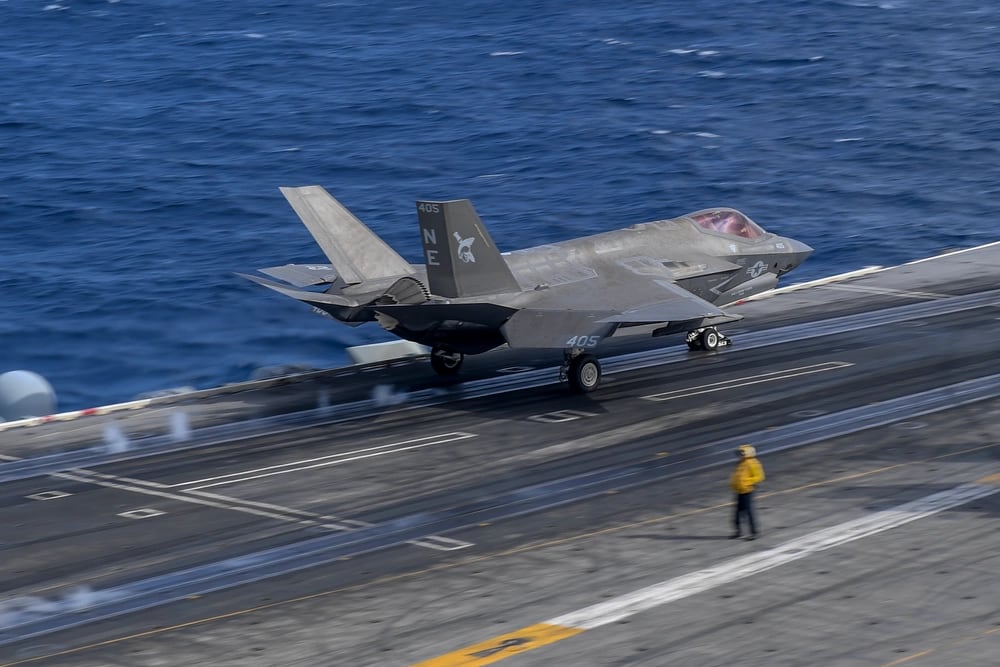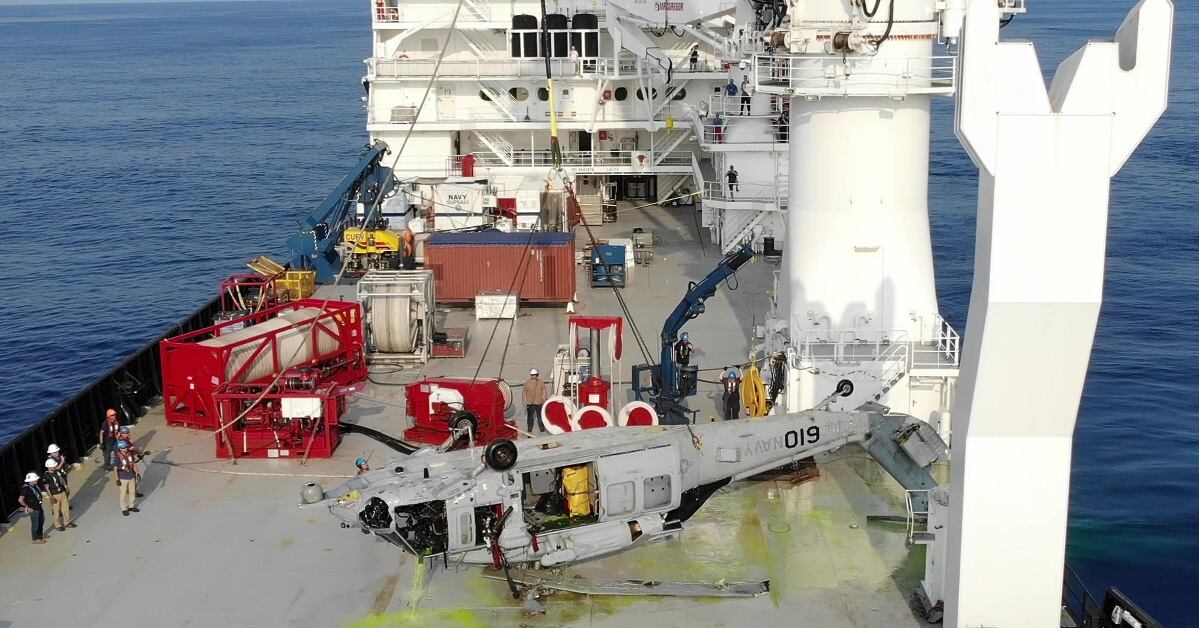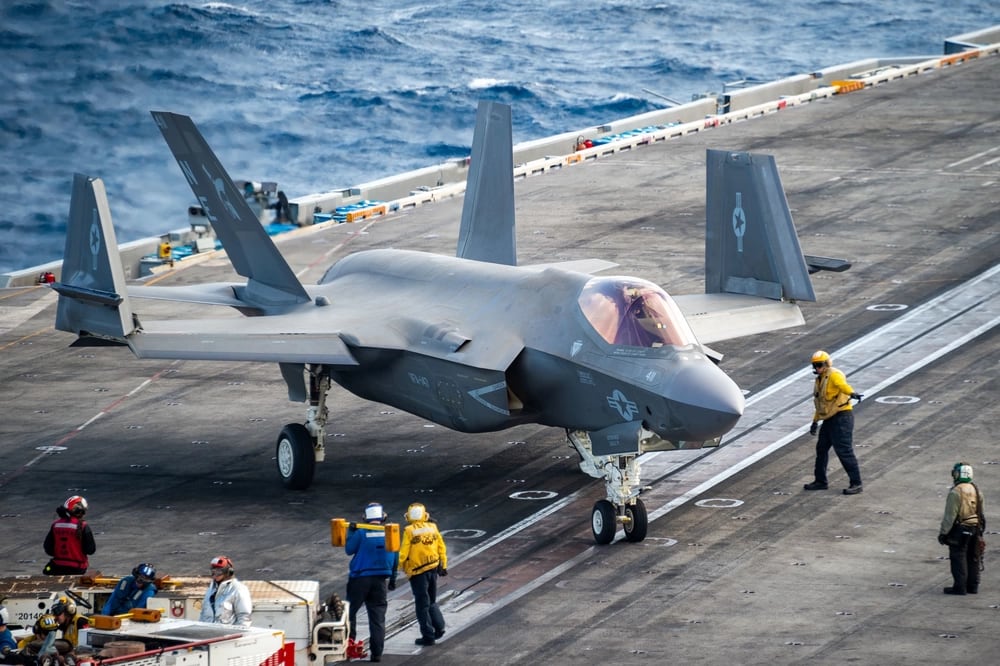A F-35C fighter jet that crashed onto the deck of the aircraft carrier Carl Vinson Monday subsequently fell into the South China Sea, Navy officials confirmed.
“Impact to the flight deck is superficial and all equipment for flight operations is operational,” Navy spokesman Lt. Mark Langford said in an email Tuesday.
Seven sailors were injured in the accident, including the pilot, who ejected from the jet.
The pilot and two other sailors were evacuated to a hospital in Manila, Philippines, and four sailors were treated on the ship for their injuries.
“All injured Sailors have been reported to be recovered or in stable condition,” Langford said.
RELATED

The Vinson deployment that began in August marked the first time that F-35s were deployed aboard a carrier.
Langford declined to say whether the Navy plans to salvage the pricey jet from the bottom of the South China Sea, arguably the most restive body of water in the world.
But losing one of the Navy’s premier fighter jets is “a big deal,” and the sea service will have to recover it, according to Mark Cancian, a retired Marine Corps officer and current senior advisor for the Center for Strategic and International Studies’ International Security Program.
“This is our most sophisticated aircraft, it has all kinds of electronics onboard that our adversaries would love to get a hold of,” Cancian said. “We need to make sure they don’t.”
The South China Sea is not very deep, so raising it would be “relatively easy,” he said.
The sea service has experience with such efforts as well.
In March, the Navy recovered a MH-60S helicopter that crashed into the Philippine Sea in January 2020, raising the wreckage from a depth of more than 3.6 miles, which was a new recovery record at the time of the operation.
RELATED

“The United States routinely goes and salvages aircraft that have crashed in order to better understand what happened and to safeguard the sensitive equipment on them,” Cancian said.
The fact that the jet impacted the carrier deck and then fell into the water suggests it remains largely intact, he added.
“It sounds like it hit the deck hard and rolled off the edge, it didn’t go into the water at speed,” Cancian said. “It gets much harder if it’s in a thousand pieces.”
The Navy has not disclosed where Vinson was in the South China Sea when the mishap occurred, but the carrier strike group was exercising with the Abraham Lincoln Carrier Strike Group at the time.
Where the mishap occurred, and who salvages it, may indicate how the Chinese military will react to the salvage operation.
If the Navy contracts with a salvage company, the sea service might need to provide an escort to ensure the Chinese navy doesn’t interfere, Cancian said.
“I’m sure the Chinese will object, they’ll send some notes and protest, they’ll send a ship out to watch, but I doubt that they do more,” he said.
One of the risks of operating at sea is that accidents like this happen, Cancian said, but losing a F-35 raises the stakes.
“Because this aircraft is so sophisticated and so modern, we have to be very careful with protecting its technology,” he said.
The Navy helped the British recover a F-35B that crashed into the Mediterranean Sea in November during the jet’s first operational cruise.
Beijing would love to recover the F-35 that just crashed in its own backyard, according to Bryan Clark, a retired submarine officer and senior fellow at the Hudson Institute.
“Although China has some F-35 data from their cyberespionage and has built a copy, the (Chinese military’s) version is probably not identical in terms of sensors and combat systems, so obtaining a U.S. aircraft would be very helpful,” Clark said.
Geoff is the managing editor of Military Times, but he still loves writing stories. He covered Iraq and Afghanistan extensively and was a reporter at the Chicago Tribune. He welcomes any and all kinds of tips at geoffz@militarytimes.com.









